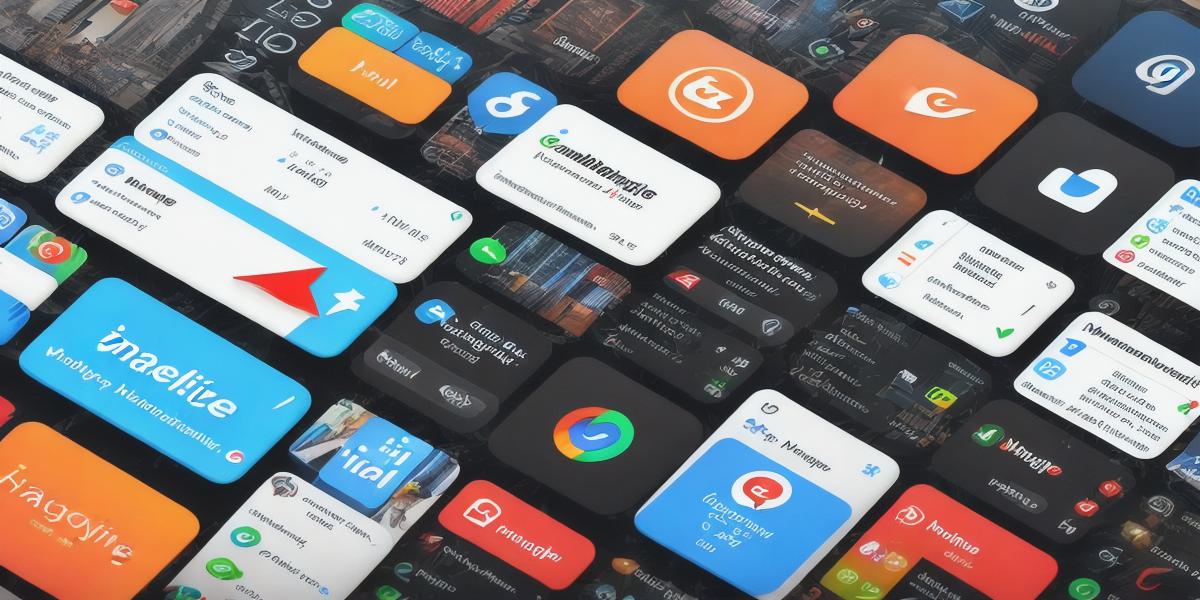Wholesaling is a popular way for businesses to sell products on a large scale. It involves purchasing goods from a supplier or manufacturer and then selling them to retailers, distributors, or other businesses. Wholesaling can be an effective way to increase revenue and expand your business, but it requires careful planning and execution to be successful. In this guide, we will explore some of the most effective marketing methods for wholesaling products, with a focus on search engine optimization (SEO).
SEO: The key to driving traffic and sales
Search engine optimization (SEO) is the process of optimizing your website and its content to rank higher in search engine results pages (SERPs) for relevant keywords. This can be an effective way to drive traffic to your website and attract potential customers.
Here are some tips for optimizing your SEO:
- Conduct keyword research: Before creating any content, it’s important to identify the relevant keywords that potential customers are searching for. You can use tools like Google Keyword Planner or SEMrush to help with this.
- Create high-quality content: Once you have identified your target keywords, create content that is informative and engaging, and includes those keywords in a natural way. This could be blog posts, product descriptions, or other types of content.
- Build backlinks: Backlinks from reputable websites can help to improve your website’s authority and ranking. Reach out to relevant websites and ask them to link back to your site.
- Use meta tags and headings: Meta tags and headings (H1, H2, etc.) help search engines understand the structure and content of your website. Make sure to include relevant keywords in these elements as well.
- Optimize images: Images can be a powerful way to attract potential customers and improve your SEO. Use descriptive file names and alt tags for all images on your site.
Case study: ABC Wholesale

ABC Wholesale is a company that specializes in selling electronics to retailers. They have been in business for over 20 years and have a loyal customer base. Here’s how they use SEO to drive traffic and sales:
- Conduct keyword research: ABC Wholesale uses Google Keyword Planner to identify relevant keywords and phrases that potential customers are searching for.
- Create high-quality content: They create detailed product descriptions and blog posts that include their target keywords in a natural way. They also have a dedicated page on their website for each product, with detailed specifications and customer reviews.
- Build backlinks: ABC Wholesale reaches out to relevant websites and asks them to link back to their site. They also participate in industry events and trade shows, where they network with other businesses and potentially earn more backlinks.
- Optimize images: They include high-quality product photos on their website, with descriptive file names and alt tags. This helps search engines understand the content of their website and can improve their ranking for relevant keywords.
- Monitor and adjust: ABC Wholesale regularly monitors their website’s traffic and ranking, and makes adjustments as needed. They use tools like Google Analytics to track user behavior on their site and identify areas for improvement.
Using social media to build brand awareness and drive sales
Social media can be a powerful tool for building brand awareness and driving sales. Here are some tips for using social media effectively:
- Choose the right platforms: Different social media platforms have different audiences and require different types of content. For example, Instagram is a visual platform, while LinkedIn is more professional. Choose the platforms that are most relevant to your target audience.
- Create engaging content: Your social media content should be engaging and informative, with a focus on your target keywords. Use high-quality images and videos, and include calls-to-action (CTAs) that encourage potential customers to visit your website or contact you directly.
- Build a following: Building a large and engaged following on social media can help to increase your reach and drive more traffic to your website. You can do this by posting regularly, engaging with your followers, and running targeted ads.
- Collaborate with influencers: Partnering with influencers in your industry can be an effective way to reach new audiences and increase brand awareness. Look for influencers who have a relevant following and whose values align with your business.
- Monitor and adjust: Regularly monitor your social media metrics and make adjustments as needed. Use tools like Hootsuite or Sprout Social to schedule and track your posts, and analyze your metrics to identify areas for improvement.
Case study: XYZ Retail
XYZ Retail is a company that sells clothing to retailers. They have been in business for over 10 years and have a strong social media presence. Here’s how they use social media to build brand awareness and drive sales:
- Choose the right platforms: XYZ Retail focuses on Instagram, where their target audience is most active. They post high-quality images of their products and include relevant hashtags to increase visibility.
- Create engaging content: They create short videos that showcase their products in action, and run targeted ads to reach potential customers. They also use influencer marketing to reach new audiences and drive more sales.
- Build a following: XYZ Retail posts regularly on Instagram and engages with their followers by responding to comments and messages. They have also run contests and giveaways to increase engagement and build a loyal following.
- Collaborate with influencers: They partnered with a popular fashion influencer on Instagram, who posted about their products to her large following. This helped XYZ Retail reach new audiences and drive more sales.
- Monitor and adjust: XYZ Retail regularly monitors their social media metrics and makes adjustments as needed. They use tools like Hootsuite to schedule and track their posts, and analyze their metrics to identify areas for improvement.
Email marketing: a targeted approach to building relationships with customers
Email marketing can be an effective way to build relationships with customers and drive sales. Here are some tips for using email marketing effectively:
- Build your list: Building a large and engaged email list is essential for successful email marketing. You can do this by offering incentives, such as discounts or exclusive content, in exchange for email addresses.
- Segment your list: Segmenting your email list based on factors like location, purchase history, and interests can help you send targeted and relevant messages to each group. This can increase engagement and conversion rates.
- Create engaging content: Your email content should be informative and engaging, with a focus on your target keywords. Include high-quality images and videos, and use personalization techniques to make the emails feel more personal.
- Use automation: Automated email campaigns can help you save time and increase efficiency. For example, you can set up an automated email series to welcome new subscribers or promote a new product launch.
A PLACE FOR A PICTURE #2 - Monitor and adjust: Regularly monitor your email metrics and make adjustments as needed. Use tools like Mailchimp or Constant Contact to track open rates, click-through rates, and conversion rates, and analyze the data to identify areas for improvement.
Case study: DEF Wholesale
DEF Wholesale is a company that sells home goods to retailers. They have been in business for over 5 years and have a strong email marketing presence. Here’s how they use email marketing to build relationships with customers and drive sales:
- Build their list: DEF Wholesale offers exclusive discounts to new subscribers, which has helped them build a large and engaged email list. They also offer content upgrades, such as free product guides or recipe books, in exchange for email addresses.
- Segment their list: They segment their email list based on factors like purchase history and interests, and send targeted messages to each group. For example, they send exclusive discounts to customers who have purchased a particular product category in the past.
- Create engaging content: They create high-quality emails that include images of their products, and use personalization techniques to make the emails feel more personal. They also include calls-to-action (CTAs) that encourage potential customers to visit their website or contact them directly.
- Use automation: They use automated email campaigns to promote new product launches or special offers, and to send welcome emails to new subscribers. This helps them save time and increase efficiency.
- Monitor and adjust: DEF Wholesale regularly monitors their email metrics and makes adjustments as needed. They use tools like Mailchimp to track open rates, click-through rates, and conversion rates, and analyze the data to identify areas for improvement.
In conclusion, building a successful wholesale business requires a multi-faceted approach that includes online marketing, social media, email marketing, and more. By following these tips and strategies, you can build brand awareness, increase traffic to your website, and ultimately drive sales.




